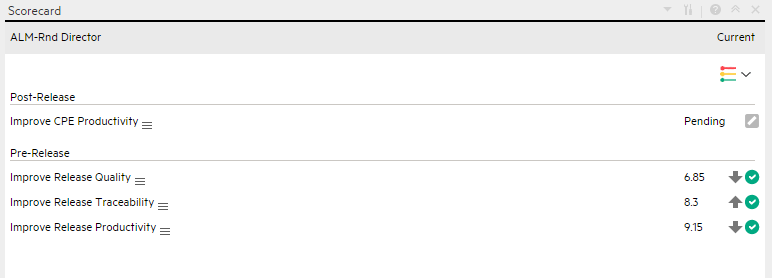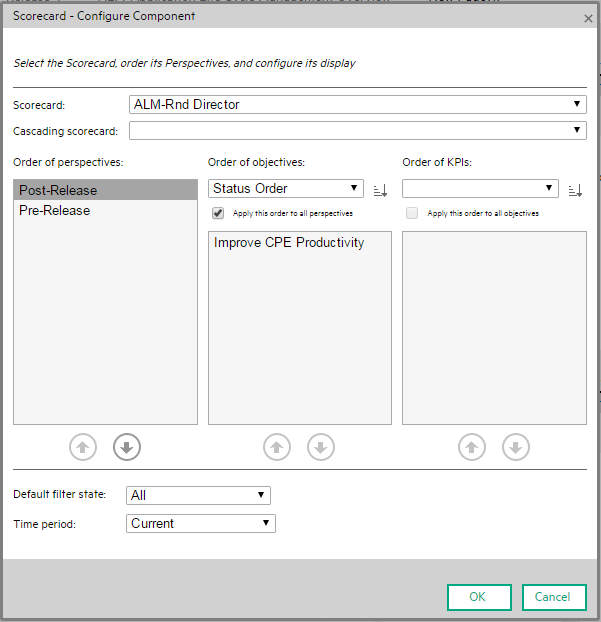Searching the Help
To search for information in the Help, type a word or phrase in the Search box. When you enter a group of words, OR is inferred. You can use Boolean operators to refine your search.
Results returned are case insensitive. However, results ranking takes case into account and assigns higher scores to case matches. Therefore, a search for "cats" followed by a search for "Cats" would return the same number of Help topics, but the order in which the topics are listed would be different.
| Search for | Example | Results |
|---|---|---|
| A single word | cat
|
Topics that contain the word "cat". You will also find its grammatical variations, such as "cats". |
|
A phrase. You can specify that the search results contain a specific phrase. |
"cat food" (quotation marks) |
Topics that contain the literal phrase "cat food" and all its grammatical variations. Without the quotation marks, the query is equivalent to specifying an OR operator, which finds topics with one of the individual words instead of the phrase. |
| Search for | Operator | Example |
|---|---|---|
|
Two or more words in the same topic |
|
|
| Either word in a topic |
|
|
| Topics that do not contain a specific word or phrase |
|
|
| Topics that contain one string and do not contain another | ^ (caret) |
cat ^ mouse
|
| A combination of search types | ( ) parentheses |
|
- Prepare the Dashboard Display
- Dashboard Page
- Page Layout and Components
- Page Gallery and Page Categories
- Component Gallery and Component Categories
- The Breakdown View Component
- The Bubble Chart View Component
- The Cluster Bar Chart View Component
- The Forecast Component
- The Historical Metric View Component
- The Historical View Component
- The KPI List Component
- The KPI Rolodex Component
- The KPI View Component
- The Line and Bar Combination Chart View Component
- The Page Filter Component
- The Pie Chart Component
- The Scorecard Component
- The Stacked Bar Chart View Component
- The SWF Report Viewer Component
- The US Map Component
- The Web Intelligence Report Viewer Component
- The Web Intelligence Static Report Viewer Component
- Webi Report Categories
- The World Map Component
- The Xcelsius Reports Viewer (Flash) Component
- Customized Static or Dynamic URL Component
- Wiring Between Components
- Personalize the Dashboard
The Scorecard component (Balanced Scorecard) displays the list of selected Perspectives and their Objectives with their value, trend, and status for the measurement period.
You can view the report in the relevant page in the Dashboard.
To configure the component, where possible, click the Configure Component  button in the component to display the component filter, or click here in Click Here to configure in the center of the component.
button in the component to display the component filter, or click here in Click Here to configure in the center of the component.
- All the time periods used in the component are periods of the fiscal year (For example, the end of the fiscal year depends on the fiscal year you have set at the system level).
-
Permissions. In the Dashboard components and in their configuration dialog boxes, you can only see the Scorecards, Perspectives, Objectives, KPIs, or KPI Breakdowns for which you have permission. If you do not have permission, you do not see that element. If you do not have permission to see all the elements in a component, the error message Data is not displayed because it does not exist or you do not have the correct viewing permissions. Contact your administrator is displayed.
Main task: Dashboard Display
 Add a Component to a Dashboard Page
Add a Component to a Dashboard Page
To add a component to a page that is already formatted:
- In the Dashboard, select the relevant page (click the Page Gallery
 button if the page you want does not already appear in the Dashboard).
button if the page you want does not already appear in the Dashboard). - Click the Components
 button.
button. -
In the Component Gallery page that opens, click or double-click the component to place it in the layout area, or select the component and drag it to an area on the page.
Note that double-click only works if you open the Component Gallery from the layout itself and not from the toolbar.
- If the target area is hidden by the Component Gallery dialog box, click the Component Gallery dialog box title bar and drag it to another location on your screen.
- If you are dragging a new component to a target area that already has a component defined, drag the new component to the title bar of the target area, and not to the part of the component that is colored white.
-
Close the Component Gallery page. For user interface details, see Component Gallery and Component Categories.
-
In the component, click the Configure Component
 button or click here in Click Here to configure in the center of the component.
button or click here in Click Here to configure in the center of the component. -
In the component Filter dialog box that opens, select the information you want to display and click OK.
The component displays the required information.
For more information, see Page Layout and Components.
 Scorecard Component
Scorecard Component

Note The component toolbar description is common to all components. Some of the elements might be disabled in some of the components.
User interface elements are described below (when relevant, unlabeled elements are shown in angle brackets):
|
UI Element |
Description |
|---|---|

|
Component Menu. Opens a menu where you can select:
|

|
Configure Component. Opens the Configure Component dialog box for the relevant component. For details, see the relevant section below. Note
Note You can also click here in Click Here to configure it in the center of the component |

|
Opens the online documentation page relevant to the component you are currently configuring. |

|
Collapse component. Collapses the component. To expand the collapsed component, click the |

|
Drag the Resize handle to enlarge or reduce horizontally the area occupied by the component. |

|
Remove Component. Removes the component from the page. |
User interface elements are described below (when relevant, unlabeled elements are shown in angle brackets):
|
UI Element |
Description |
|---|---|
| <Component contents> |
The following information is displayed, from left to right:
|
|
|
Click the button in the top right corner of the Scorecard and select the relevant status:
The default selection is configured in the Default filter state field in the Scorecard - Component Filter dialog box. For details, see The Scorecard Component. |
| <Tooltip> | Move the mouse over the name of an Objective in the list to display a tooltip that include detailed information about the KPI. For details, see First Level Navigation (FLN) for an Objective, a KPI, or a Metric. |
 Scorecard - Configure Component Dialog Box
Scorecard - Configure Component Dialog Box

User interface elements are described below (when relevant, unlabeled elements are shown in angle brackets):
|
UI Element |
Description |
|---|---|
|
Scorecard |
Select the Scorecard you want to display in the component. The list of Scorecards that is displayed corresponds to the Scorecards that are permitted for your user. For details about permissions, see User Management The list of the Scorecard's Perspectives, Objectives, and KPIs are displayed in the Order of Perspectives, Order of Objectives, and Order of KPIs areas. |
| Cascading scorecard |
If the selected Scorecard has Cascading Scorecards, you can select a Cascading Scorecard in the Cascading Scorecard list that is permitted for your user. For details about permissions, see Users and Roles - User Management The Perspectives, Objectives, and KPIs of the selected Cascading Scorecard are then listed in the lower part of the dialog box, and you can select their orders as described below. |
| Order of perspectives |
Select a Perspective and use If needed, once you have selected the order of Perspectives, click each Perspective and order its Objectives in the Order of Objectives area. |
| Order of objectives |
Select how to display the Objectives in the Scorecard component in the Dashboard page. Status Order. Select to sort the Objectives by status. This is the default. Click Alphabetical Order. Select to sort the Objectives in alphabetical order. Click Manual Order. Select to sort the Objectives manually. Use Apply this order to all perspectives. If needed, select this option to apply the order you selected for the set of Objectives of the Perspective currently selected, to all the Objectives of all the Perspectives of the Scorecard. If needed, once you have selected the order of Objectives, click each Objective and order its KPIs in the Order of KPIs area. |
| Order of KPIs |
Select how to display the KPIs in the KPI View components wired to the Scorecard component in the Dashboard page. Status Order. Select to sort the KPIs by status. This is the default. Click Alphabetical Order. Select to sort the KPIs in alphabetical order. Click Manual Order. Select to sort the KPIs manually. Use Apply this order to all Objectives. If needed, select this option to apply the order you selected for the set of KPIs currently displayed to all the KPIs of all the Objectives of the Scorecard. This sorting includes the KPIs of child Objectives of the Objectives of the Scorecard. |
|
Default filter state |
Select the icon that is automatically selected in the Scorecard display:
|
|
Time period |
Select the time period to be displayed in the component:
Note
|
We welcome your comments!
To open the configured email client on this computer, open an email window.
Otherwise, copy the information below to a web mail client, and send this email to SW-Doc@hpe.com.
Help Topic ID:
Product:
Topic Title:
Feedback:









 Preferences. Depending on the component you are current configuring, opens the <component_name> Preferences dialog box where you can change the name of the component in the page by changing the name in the Name field and clicking OK.
Preferences. Depending on the component you are current configuring, opens the <component_name> Preferences dialog box where you can change the name of the component in the page by changing the name in the Name field and clicking OK. Wiring. Depending on the component you are currently configuring, opens the Wiring dialog box where you can wire the current component to other components. For details, see
Wiring. Depending on the component you are currently configuring, opens the Wiring dialog box where you can wire the current component to other components. For details, see  Refresh. Refreshes the display. The button is disabled in the Page Filter component.
Refresh. Refreshes the display. The button is disabled in the Page Filter component. Open in a New Window. Opens the component in a new window.
Open in a New Window. Opens the component in a new window. button on the collapsed component.
button on the collapsed component.

 to display all the Objectives with any Status.
to display all the Objectives with any Status. to display only the Objectives with an Error Status.
to display only the Objectives with an Error Status. to display only the Objectives with a Warning status.
to display only the Objectives with a Warning status. at the bottom of the area to order the Perspectives as you want to display them in the Scorecard component in the Dashboard page.
at the bottom of the area to order the Perspectives as you want to display them in the Scorecard component in the Dashboard page. to select the ascending or descending order.
to select the ascending or descending order.